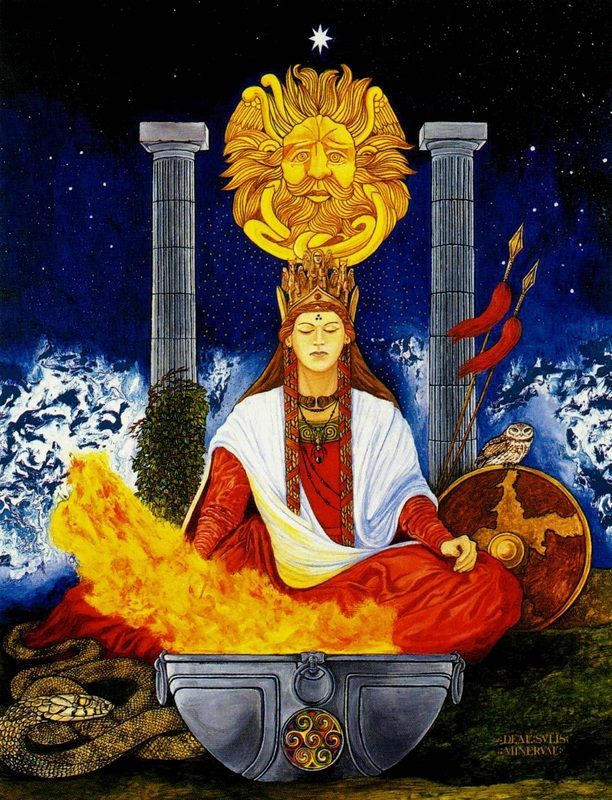*Per leggere questo articolo in Italiano clicca qui.*
At the Summer Solstice, it is impossible not to mention the paranormal: since the sun is at its peak, during its long journey in the sky, even magic reaches its full power under its golden rays. Throughout Europe there are legends related to the solstice and how natural laws were overturned on this particular day.
As often happens on the occasion of these particular astronomical events, the veil between the worlds becomes thinner and thus communication with the supernatural is favored.
Not only are there particularly suitable periods of the year, but also places of power where other dimensions are more accessible. One of these is Doon Hill, a small corner of peace and lush greenery at the foot of the Scottish Highlands. Although small and probably known only by the most accustomed fans of British folklore, it is the scene of a truly fascinating story about the fair folk.
It happens to be the place where the remains of Reverend Robert Kirk rest, author of "The Secret Commonwealth" and whose fate is still a mystery shrouded in the mists of this magical land.
Kirk was the minister of Aberfoyle, where he remained until his death: he achieved moderate success as the author of the first complete Gaelic translation of the Bible, but his true fame was reached postmortem thanks to the book The Secret Commonwealth - a collection of folklore and legends written between 1691-1692, but published only in 1815.
Kirk, despite his Christian faith, was the holder of what is called "second sight" - which may seem an oxymoron, accustomed as we are to today's conception of Christianity. But we must remember that many Christian customs are imbued with paganism and vice versa, intertwined over the centuries - especially when it comes to rural places, instilled with pre-Christian customs. It was therefore not uncommon to hear of "second sight" in the Scottish Highlands, it was almost routine and prestigious status.
Wandering through the local countryside, gathering evidence of encounters with the fairy folk, he used to frequent nearby Doon Hill - a hill surrounded by woods, not far from his parish. There he said he often encountered ethereal creatures "somewhat of the nature of condensed cloud and best seen in twilight", - who illustrated the habits and customs of their people. They dressed and talked like humans, danced, celebrated, sang but with substantial differences: for example, they fed on the lifeblood (foison) and managed to pass through tiny holes and cracks in the walls. Their homes, where they lived in a society with a well-defined hierarchy, were located underground and often visited this dimension during the nights of Samhain and Beltane - when the veil between worlds was thinnest. There were also differences in what we can call "moral": the fairies were neither good nor bad, sometimes they made themselves useful to others by giving advice on how to fix tools or warning of imminent dangers, sometimes instead they kidnapped young mothers to breastfeed their children, they seduced humans and / or stole their infants - think of the famous changelings for example.
The Norse and the Anglo Saxons, indeed, called them alfar (elves).
In Ireland they were known as sidhe, while in Scotland as sith - meant as inhabitants of the Sitheans, mounds considered portals to the other world, while in Wales they were called ellyllon (shining beings). Today's connotation of fairies derives from the French fée and then Englishised into fairy.
Those who met them, during their crepuscular celebrations, were overwhelmed by an irrepressible desire to dance and follow the procession - often ending up in their world and then being unable to return. Only the purest of heart and most gifted in the arts were able to receive gifts and return to this dimension.
Returning to our Robert Kirk, one day he was mysteriously found dead at the top of the hill. The reason for his death is still a mystery now ... it may have been an illness, maybe he fell into the wrath of the fairy people for having revealed their secrets, some say that the body was simply a simulacrum and the real Robert Kirk was transported to the kingdom of fairies.
Whatever the truth, his body (real or not) is buried at Aberfoyle Cemetery, while Doon Hill can be visited via a peaceful and relaxing path - lined with trees covered with ribbons, prayers, flowers and offerings. Pulsating memory of a folklore that was and still lives in the hearts of those who visit the hill, perhaps hoping to meet some supernatural being.
Whatever you do for the solstice, be careful.
The veil becomes thin, and with it the visits on this plane more frequent.




















